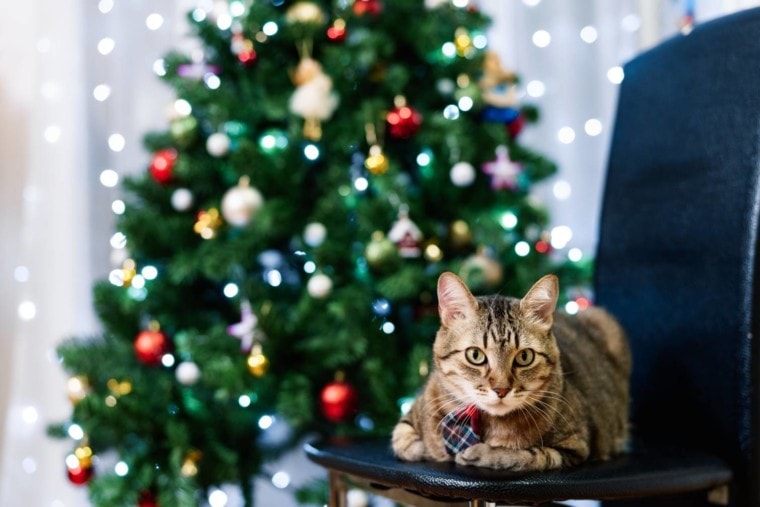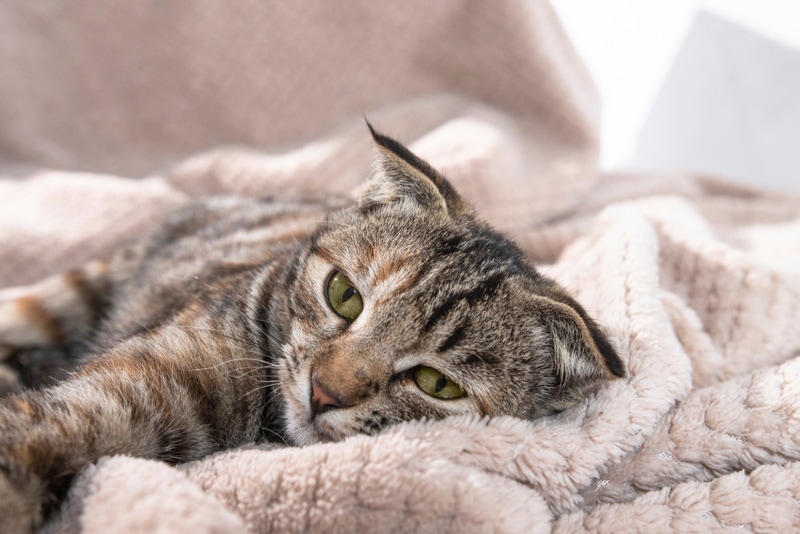
Christmas is a magical time of the year, and nothing gets a person in the mood for the holiday season as setting up the Christmas tree. However, did you know that both real and artificial Christmas trees can be hazardous for curious cats who like to eat things they shouldn’t?
If your cat has eaten needles from your real tree or plastic branches from your artificial one, you should probably reach out to your veterinarian for advice. Christmas trees, regardless of if they’re real or fake, can be toxic to cats. Thankfully, there are some things you can do to ensure your tree doesn’t harm your kitty. Read on to learn more.
What Do I Do if My Cat Ate My Real Christmas Tree?
We recommend reaching out to your vet if your cat has eaten any part of your real tree. The most kept Christmas trees—pine, spruce, fur—contain sap that is mildly toxic if ingested as it irritates the digestive system. Pine oil in particular is toxic to cats as it contains essential oils, which cat’s don’t process very well. So while touching the leaves may not be a problem for cats, chewing on them can make them ill. As cats are fastidious groomers any sap that ends up in their coat will likely end up being ingested too.
When your cat ingests even a small amount of tree sap by chewing the branches or needles of the tree, they may exhibit signs such as:
Fallen tree needles can also be ingested and cause impactions and obstructions. In severe cases, the needles can even puncture the lining of your cat’s esophagus, stomach, or intestines, causing a medical emergency that requires immediate treatment.
Additionally, the water that your Christmas tree sits in can be hazardous as many people use chemicals in the water to prolong the tree’s life. These chemicals can be extremely dangerous for cats, causing mild signs like stomach pain or even serious signs like seizures or liver issues. If you catch your kitty lapping at your trees’ water, visiting the vet clinic should be in order, after you double check which chemicals may have been put there.

What Do I Do If My Cat Ate My Artificial Tree
While artificial trees can be safer as they do not contain poisonous sap like some real trees, nor pose the same puncture risk, they still aren’t 100% cat-proof. If you know that your cat has been eating your fake tree because you’ve either witnessed them eating it or found pieces of the tree in piles of vomit around your home, we recommend contacting your veterinarian for advice.
Most modern artificial trees are made of plastic PVC-like material. While this isn’t great for cats to eat, they’re generally not considered toxic. However, curious cats can chew on the plastic leaves to the point where they are swallowed, potentially causing obstructions.
Flocking is another thing to be concerned about with artificial trees. Flocking (imitation snow) can be hazardous to cats that eat it. It is considered mildly toxic but can lead to serious blockages if your cat helps themselves to too much of it.
How Can I Protect My Cat When Decorating for Christmas?
Final Thoughts
With some foresight and precautions, you and your cats can live harmoniously with your beautiful tree. However, if you catch your kitty eating your tree, whether it is real or fake, we recommend reaching out to your veterinarian for advice on what steps you should take. While the tree pieces may pass through your kitty without incident, they could cause potentially serious or life-threatening effects. It’s best to ask your vet for their opinion, and once you have been given the thumbs up that your kitty is indeed okay, you can use our advice above to prevent ingestion from happening again in the future.
Featured Image Credit: Nadtochiy, Shuttterstock







